TANI TRIBES
Tani tribes are of 15 tribes, they are-Sherdukpin, Sartang, Bugun, Aka, Miji, Puroik, Nyishi, Apatani, Tagin, Galo, Adi, Mishmi, Lhoba, Mishing and Karbi.
ADI: The Adi are a conglomeration of various ethnic subgroups of the Tani people, which includes the Bokar, Bori, PaiLibo Minyong, Millang, Pasi and Padam people.They live in a region of the Southern Himalayas which falls within the Indian state of Arunachal Pradesh and the Mainling, Lhunze, Zayu, Medog and Nyingchi coun ties of the Tibet Autonomous Region, China. The present habitat of the Adi people is heavily influenced by the historic location of the ancient Lhoyu. They are found in the temperate and sub-tropical regions within the districts of East Siang, Upper Siang, West Siang, Lower Dibang Valley and Lohit within Arunachal Pradesh. The term "Adi" however, is not to be confused with the Lhoba people, since the Lhoba also includes the Mishmi people along with the Adi people. All the ethnic groups recognising themselves as "Adi" believe to be descendants of the AboTani. The older term Abor is a deprecated exonym from Assamese and its usage is now obsolete. The literal meaning ofadi is "hill" or "mountain top."
APATANI: The Apatani, or Tanw, are a tribal group of people descendant of Abo Tani living in the Ziro valley in the Lower Subansiri district of Arunachal Pradesh in India.
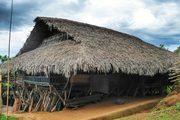
GALO: The Galo are a central Eastern Himalayan tribe, who are descendants of Abo Tani and speak the Tani language Gallong. The Galo primarily inhabit the West Siang district of modern-day Arunachal Pradesh state in North Eastern India, but are also found in the southwestern side of East Siang district, the southeastern side of Upper Subansiri district, as well as in some small pockets in Itanagar, Lower Dibang Valley, and Changlang districts. Other names which have been used to reference the Galo in the past include Duba, Doba, DobahAbor, GallongAbor, Galon g, GallongAdi, etc. The Galo have been listed as a scheduled tribe under the name Gallong since 1950. Recently, the Galo have successfully lobbied to change this term to Galo, reflecting the actual Galo pronunciation of this name.
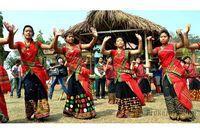
MISHING: The Mishing people or Misíng also called Miri are an ethnic tribal group inhabiting the districts of Dhemaji, Lakhimpur, Sonitpur, Tinsukia, Dibrugarh, Sibsagar, Jorhat and Golaghat of the Assam state in India. The total population is more than 1 million in Assam but there are also more than 50,000 Mishing, divided among three districts: East Siang district, Lower Dibang Valley, and Lohit districts of Arunachal Pradesh. Few of them have settled themselves permanently in National capital Delhi and few hundreds in Mumbai which is the financial capital of India. They are the second largest tribal group in North-East India, first being the Bodos in Assam. They were earlier called Miris in historical days and the Constitution of India still refers to them as Miris. Mishing derives from the two words Mi and Toshing/Anshing."Mi" means man while Anshing/Toshing means worthiness or cool. So Mishing means man of worthiness. The word mi is familiar to many tribe in south east Asia. To depict non-tribal outsiders the word Mipak is used extensively which means man of unworthiness. So Mipak is the opposite meaning of Mishing

NYISHI: The Nyishi tribe is one of the principal inhabitants of Arunachal Pradesh in north-eastern India. Nyi refers to "a man" and the word shi denotes "a being", which collectively means a civilized human being. They are spread across six districts of Arunachal Pradesh viz., Papum Pare, part of Lower Subansiri, KurungKumey, East Kameng, parts of Upper Subansiri, the recently created district KraDadi and are also found in the Sonitpur and North Lakhimpur districts of the neighbouring state of Assam. Their population of around 300,000 makes them the most populous tribe of Arunachal Pradesh, closely followed by the combined tribes of the Adis and the Galos who were the most populous in the 2001 census. The Nyishi language belongs to the Sino-Tibetan family; however, the origin is disputed. Polygyny is prevalent among the Nyishi. It signifies one's social status and economical stability and also proves handy during hard times like clan wars or social huntings and other social activities. This institution however is being challenged especially with the trend towards modernization and also with the spread of Christianity. They trace their descent patrilineally and are divided into several clans.
PUROIK: The Puroik a tribe of the hill-tracts of Arunachal Pradesh in India. They speak the Puroik language. The Puroik people are found in an estimated of 53 villages in the districts of Lower Subansiri and Upper Subansiri, Papumpare, Kurung Kumey and East Kameng along the upper reaches of the Par River. They number roughly 7,000 people. They are a "Scheduled Tribe" in India. They claim kinship with the Khowa (Bugun). Economically, they are at a transitional stage between a hunter gatherer lifestyle and agriculturalism. They retain their traditional religion, with some adherence to either Animism or Christianity.
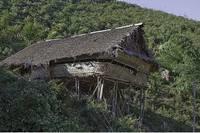
TAGIN: The Tagin tribe is one of the major tribes of Arunachal Pradesh, which is a member of the larger designation of Tani Tribes, the descendants of Abu Tani. Mostly Tagins are in Upper Subansiri district but are also found to be dispersed among the adjoining districts especially in West Siang and Mechuka.
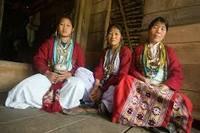
AKA: The Aka, also known as Hrusso, are found in the Thrizino (cultural hub), Bhalukpong (commercial hub), Buragaon, Jamiri, Palizi, Khuppi area in West Kameng of the Indian state of Arunachal Pradesh. Their language belongs to the Tibeto-Burman family. The Aka share strong cultural affinities with the Miji, and intermarriage with the Miji is prevalent. Centuries of Vaishnava and intermittent Tibetan influence from the Sherdukpen has shaped the Aka culture into its modern form. Handicrafts, basket weaving and wood carving are the principal arts among the Aka tribe. Intermittent Tibetan contacts is evidenced by the fact that the Aka and Mishmis are known as "Khakhra" (meaning barbarians) to the Tibetans.

MIJI: The Miji, also known by the names of Sajolang and Damai, inhabit the districts of West Kameng, East Kameng and a minuscule region of KurungKumey in Arunachal Pradesh, India. Their population of 37,000 are found near the lower parts of the sub-Himalayan hills bordering Assam; they speak the Sajalong language. The traditional costume of Miji women consists of an ankle-length white garment with a beautifully decorated red jacket. Like the Akas, the Miji wear silver ornaments and glass-based necklaces. Indigenous cosmetics are made from pine resin. Most Miji are adherents of Animism, although a few have adopted Christianity. Like the Akas, the Mijis share religious affinities with the Donyi Polo faith and thus are considered adherents of Donyi Polo, although other gods are given higher veneration than Abotani. There is some Buddhist influence as a result of longstanding cultural contacts with Buddhist tribes to the west, and the celebration of Losar as well as the usage of prayer flags are some indicators of this.
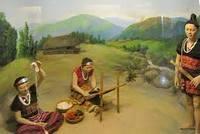
MISHMI: The Mishmi or Deng people of Tibet and Arunachal Pradesh are an ethnic group comprising mainly three tribes: Idu Mishmi (IduLhoba); Digaro tribe (Taraon, Darang Deng), and Miju Mishmi (Kaman Deng). The Mishmis occupy the northeastern tip of the central Arunachal Pradesh in Upper and Lower Dibang Valley, Lohit and Anjaw Districts/Medog County. The three sub-divisions of the tribe emerged due to the geographical distribution, but racially all the three groups are of the same stock. The Idu are also known as YiduLhoba in Tibet and often referred as Chulikatas in Assam. The Idus are primarily concentrated in the Upper Dibang Valley and Lower Dibang Valley district and parts of the northern part of Lohit district of Arunachal Pradesh in India. Taraon, also called Digaru Mishmis are distributed in the hill and the foothills between the Dibang, Digaru and the Lohit rivers. Kamans are also known as the Miju Mishmis; they live between the Lohit and the Kambang rivers in the foothills and in the Mishmi Hills on both sides of the Lohit river right up to the frontiers to Rima. The IduMishmis were the first come from Burma. They were followed by the ancestors of the Digaru Mishmis a little over 500 years ago. The Mijus were the last to migrate from the direction of Hakamti-Long on the Kachin country.